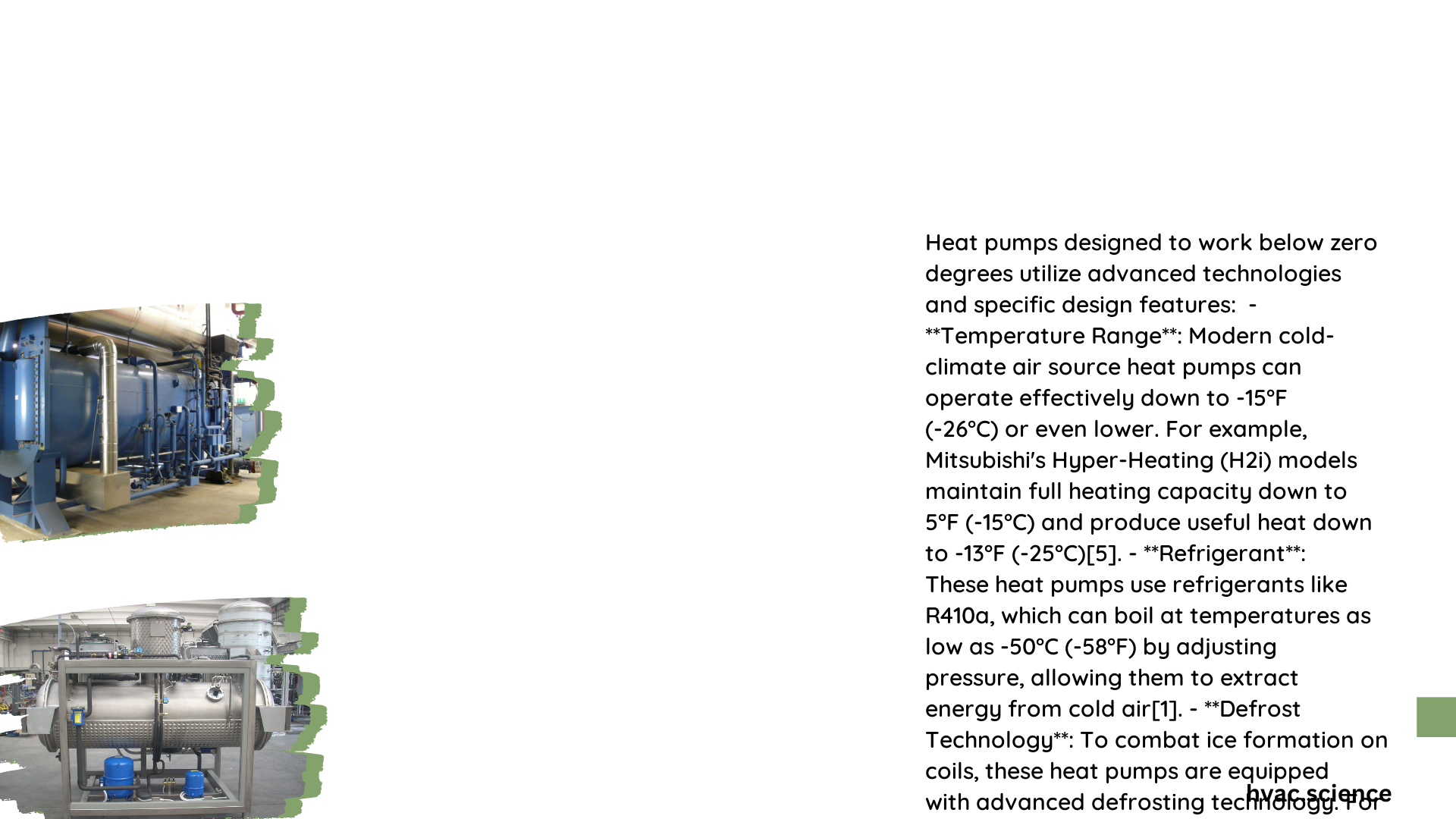Heat pumps that work below zero are advanced heating systems designed to operate efficiently in sub-zero temperatures. These innovative devices utilize specialized technology to extract heat from extremely cold outdoor air and transfer it indoors, maintaining comfort even in harsh winter conditions. With improved performance metrics, enhanced refrigerants, and optimized compressor designs, these heat pumps offer a sustainable and cost-effective heating solution for regions with severe winters.
What Are the Key Performance Metrics for Heat Pumps in Cold Climates?
Heat pumps that work below zero are evaluated based on two primary performance metrics:
- Coefficient of Performance (COP): This measure indicates the heat pump’s efficiency at specific temperatures.
- Heating Seasonal Performance Factor (HSPF): This metric assesses the overall heating efficiency throughout the entire season.
How Does COP Change in Sub-Zero Temperatures?
The COP of a heat pump typically decreases as outdoor temperatures drop. For example:
- At 30°F (-1°C): COP ranges from 3.2 to 3.7
- At 5°F (-15°C): COP ranges from 1.8 to 2.8
- At -10°F (-23°C): COP is about 1.4
- At -15°F (-26°C): COP is just above 1.0
These values demonstrate that even in extremely cold conditions, heat pumps can still operate above the break-even point (COP > 1), making them more efficient than traditional electric resistance heating.
What is the Significance of HSPF for Cold Climate Heat Pumps?
HSPF is crucial for understanding a heat pump’s overall efficiency throughout the heating season. The U.S. Department of Energy (DOE) has set minimum HSPF standards:
- Current minimum: 8.2
- 2023 minimum: 8.8
For cold climate heat pumps, the new HSPF2 metric is more relevant as it accounts for colder temperatures and part-load conditions. An HSPF2 rating is approximately 11% lower than the HSPF rating.
What Technological Advancements Enable Heat Pumps to Work Below Zero?

Several technological innovations contribute to the ability of heat pumps to operate efficiently in sub-zero temperatures:
- Advanced Refrigerants: Modern heat pumps use refrigerants like R-410A or R-32, which perform better in cold temperatures.
- Improved Compressor Designs: Variable speed and inverter-driven compressors adjust their speed to match heating demand, enhancing efficiency across various temperatures.
- Specialized Defrost Mechanisms: These clear ice from the outdoor coil, ensuring continuous operation in freezing conditions.
- Multi-Stage and Modulating Systems: These systems optimize efficiency by operating at different capacities based on outdoor temperatures.
What Challenges Do Heat Pumps Face in Sub-Zero Temperatures?
Despite technological advancements, heat pumps still face several challenges in extremely cold climates:
- Efficiency Decline: The COP decreases significantly as temperatures drop, affecting overall performance.
- Operational Limits: Most heat pumps become less efficient below 25°F (-4°C) and may require backup heating in extremely cold regions.
- Increased Maintenance: Regular maintenance is crucial to prevent ice buildup and ensure optimal performance.
What Are the Cost Implications of Installing a Heat Pump That Works Below Zero?
The cost of installing a heat pump that works below zero can vary based on several factors:
- Initial Cost: High-efficiency models with advanced features typically range from $3,000 to $10,000 or more.
- Installation Expenses: Professional installation is crucial and can add significantly to the overall cost.
- Long-term Savings: Despite higher upfront costs, these systems can lead to substantial energy savings over time, especially in regions with high electricity rates.
What Should Homeowners Consider When Installing a Cold Climate Heat Pump?
When installing a heat pump for sub-zero temperatures, consider the following:
- Proper Sizing: Ensure the system is correctly sized for your home’s heating needs.
- Home Insulation: Adequate insulation is crucial for maximizing the heat pump’s efficiency.
- Climate Considerations: Choose a model specifically designed for your region’s climate.
- Professional Installation: Work with certified HVAC professionals experienced in cold climate heat pump installation.
How Do Heat Pumps That Work Below Zero Compare to Traditional Heating Systems?
| Aspect | Heat Pumps | Traditional Heating Systems |
|---|---|---|
| Efficiency | High COP even in sub-zero temperatures | Lower efficiency, especially for electric resistance heating |
| Environmental Impact | Lower carbon footprint | Higher emissions, especially for fossil fuel-based systems |
| Initial Cost | Higher upfront investment | Generally lower initial costs |
| Operating Costs | Lower long-term operating costs | Higher operating costs, especially in cold climates |
| Versatility | Provides both heating and cooling | Typically heating-only systems |
In conclusion, heat pumps that work below zero represent a significant advancement in home heating technology. While they face challenges in extremely cold climates, their improved efficiency and performance make them an attractive option for homeowners in regions with harsh winters. As technology continues to evolve, these systems are likely to become even more efficient and cost-effective, further solidifying their place in the future of sustainable home heating.
References:
1. JADE Learning – Cold Climate Heat Pumps
2. GreenBuildingAdvisor – Mitsubishi Heat Pump COPs at Temps Below 17 Degrees F
3. Trane – What is HSPF2 and Heat Pump Efficiency?
